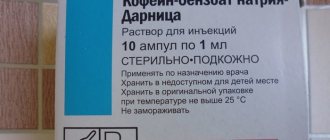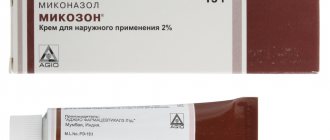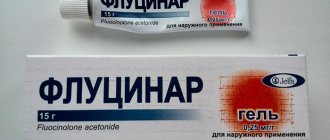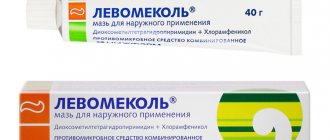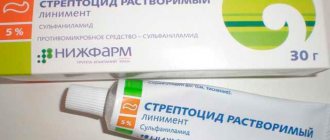October 24, 2021 Last revised: December 21, 2021 Medicinal products
Stomatitis is a common disease of the oral mucosa in children. However, adult patients often turn to the dentist for the same reason. Pharmacists offer a wide range of medications to eliminate the disease, including the drug sodium tetraborate. How is sodium tetraborate useful for stomatitis?
pharmachologic effect
A solution of sodium tetraborate in glycerin has a bacteriostatic and antiseptic effect on the body. The product demonstrates bacteriostatic activity. The drug is highly effective in the treatment of vaginal candidiasis . The product helps remove the fungal mycelium from the vagina, prevents the attachment of the pathogenic fungus to the walls of the vagina and stops the process of its reproduction.
It does not have a fungistatic or fungicidal effect, therefore this drug is not an antifungal agent.
Describing what sodium tetraborate is, it should be noted that this substance is also part of combination drugs that are used to treat inflammation of the upper respiratory tract .
Sodium tetraborate has an insecticidal effect .
Contraindications and precautions
Do not use drugs in case of excessive sensitivity to the components, as well as in case of violation of the integrity of the epidermis.
To increase the effectiveness of drugs in the treatment of vaginal candidiasis, it is recommended to carry out procedures with the participation of medical personnel. This is necessary to ensure the expected therapeutic effect, otherwise there may be relapses of the disease.
Simultaneous treatment with other antimycotic drugs (for example, clotrimazole or griseofulvin), hormone-containing drugs, as well as agents containing phenol and boric acid should not be carried out.
There is no information about possible interactions with alcohol.
Sodium Tetraborate, instructions for use (Method and dosage)
The drug should be used for lubricating the skin, douching, rinsing, depending on the diagnosis, 2-3 times a day. Instructions for sodium tetraborate for newborns and children are based primarily on the recommendations of the treating pediatrician. As a rule, for newborn babies suffering from stomatitis , the mucous membrane is treated with a cotton swab dipped in a solution. The procedure is carried out three times a day, treatment lasts 6 days.
If candidiasis affects the oral mucosa, the solution should be used to treat the areas affected by the fungus 2-3 times a day. Treatment should last from 3 to 7 days, depending on the patient's condition.
Before using sodium tetraborate, patients with genital thrush should douche with herbal decoctions or boiled water. Next, moisten a gauze swab with the product and insert it into the vagina for about 30 minutes. The number of such procedures depends on the patient’s condition. If the symptoms of candidiasis are mild, it is enough to carry out the procedure once a day. In the chronic stage of the disease and severe symptoms, the product should be used twice a day. The duration of treatment is 1 week, even if the symptoms have disappeared, you should not stop therapy earlier. During treatment, after removing the tampon, you should avoid washing for some time. During the treatment period, it is recommended to use neutral soap.
Patients with tonsillitis are treated with tonsil solution; this procedure should be carried out 4-6 times a day. The duration of treatment is 7 days. To make the therapeutic effect more pronounced, you need to practice gargling with a saline solution of sodium tetraborate. You can prepare it yourself. To do this, a few drops of the product need to be diluted in a saline solution (1 teaspoon of salt per 1 glass of water). A specialist will tell you how to make a rinse solution in other proportions.
Diagnosis and symptoms of stomatitis
The appearance of purulent white ulcers on the mucous membrane (stomatitis) worries children almost from birth. The causes of this pathology are not fully understood: perhaps it is a reaction of the immune system to an as yet unrecognized virus.
In children, the disease is severe:
- the mucous membrane swells and turns red;
- ulceration forms at the site of the white plaque;
- hyperthermia and general malaise are noted;
- lymph nodes enlarge;
- Sometimes ulceration appears on the surface of the lips and skin.
Stomatitis differs in the nature of the disease: acute and recurrent form. The causes of stomatitis can be caused by infection of the body or injuries to the mucous membrane, for example, a hard nipple on a bottle of formula. Stomatitis is most common in infants: the habit of trying everything on the tooth leads to inevitable injuries. In adults, mucosal ulceration can be caused by poor oral hygiene or aggressive antibiotic therapy.
A factor creating conditions for the development of the disease may be:
- acute infection;
- dermatitis;
- blood diseases;
- vitamin deficiency;
- mucosal injury;
- use of certain medications.
In most cases, stomatitis of an infectious nature occurs, caused by oral bacteria - they constantly live on the mucous membrane. A decrease in the tone of immune bodies provokes active growth and reproduction of bacteria. In children, aphthous stomatitis, which occurs against the background of immune deficiency, is more common.
Overdose
It should be borne in mind that when taking the drug orally, the lethal dose for an adult is 10–20 g.
In case of overdose, the following symptoms may occur:
- abdominal pain, diarrhea , vomiting ;
- headaches, feeling of general weakness;
- loss of consciousness , dehydration ;
- convulsions, twitching of the muscles of the face or limbs;
- liver and kidney damage;
- cardiovascular failure.
In this case, it is necessary to immediately rinse the stomach and perform forced diuresis. For severe poisoning, hemodialysis is practiced. Riboflavin is prescribed intravenously, a mononucleotide. Correction of acidosis and water-electrolyte balance is carried out. sodium chloride solutions, and plasma-substituting solutions are also administered intravenously .
If the patient complains of stomach pain, he is prescribed a solution of platyphylline and atropine , a 1% solution of promedol, and a glucose-novocaine mixture is injected intravenously.
Means are also prescribed to support the normal functioning of blood vessels and the heart.
Side effects and overdose
The development of irritation, itching, and local swelling caused by fluid retention cannot be ruled out. Typically, such manifestations are observed in persons prone to allergic reactions (especially in children).
If negative symptoms are diagnosed, it is not recommended to use drugs; you should consult a doctor. For children, the pediatrician may recommend replacing this solution with antimicrobial powder.
In case of overdose, the following manifestations may occur:
- Painful sensations in the abdominal area
- Acute diarrhea
- Vomiting
- Development of dermatitis
- Lethargy
- Menstrual dysfunction
- Dihydration
- The occurrence of anemia
- Disturbance of the cardiovascular system, renal system and kidneys
- Alopecia.
As a treatment, it is recommended to flush the gastrointestinal tract and conduct a controlled diuresis. For severe signs of poisoning, hemodialysis may be indicated.
Analogs
Level 4 ATC code matches:
Boric ointment
Boric acid
Teymurova paste
Fukortsin
Sodium Tetraborate solution has no analogues for the active substance. However, there are many drugs that have a similar effect. about what can replace this remedy for stomatitis , candidiasis and the treatment of other diseases.
Sodium tetraborate price
Borax solution is considered an affordable antifungal agent. The average price of the drug varies from 15 to 45 rubles per 30 ml bottle. The cost of the substance depends on the form of release, the manufacturer and the region of distribution. After consulting a doctor, you can replace the drug with its analogues: Mirant or Asmur. You can find out how much sodium tetraborate costs in a pharmacy from the approximate price table:
| Name | Price in rubles |
| Borax with glycerin solution 20% 30 ml | 30 |
| Sodium tetraborate solution with glycerin 20% 30 g | 12 |
| Borax 50 g | 60 |
Sodium Tetraborate price, where to buy
How much does the drug cost? The cost of Sodium Tetraborate averages 10-15 rubles.
Where can I buy the product? The product is sold in pharmacies and online pharmacies. You can find out where to buy Sodium Tetraborate directly from pharmacy chains.
- Online pharmacies in RussiaRussia
- Online pharmacies in UkraineUkraine
ZdravCity
- Sodium tetraborate solution in glycerin 20% fl.
30gZAO Moscow pharmaceutical factory 30 rub.order
Pharmacy Dialogue
- Sodium tetraborate (borax solution in glycerin) (flask 20% 30g) Samaramedprom
15 rub. order
- Sodium tetraborate (borax solution in glycerin) (flask 20% 30g) MFF
18 rub. order
- Sodium tetraborate (borax solution in glycerin) (flask 20% 30g) Tverskaya FF
16 rub. order
show more
Contraindications
You can buy “Sodium tetraborate” in almost any pharmacy. However, before using it, you should be sure to familiarize yourself with the available contraindications for this product. Thus, according to the instructions, this solution is not recommended for use in case of significant damage to the skin and mucous membranes, during pregnancy, with increased sensitivity to the main substance and during lactation.
It is also important to remember that the presented product is not intended for internal use. Due to increased toxicity, the solution should not be used in pediatrics.
Side effects
At the site of treatment with borax, a burning sensation may be felt and redness of the skin or mucous membranes may be observed. In this case, the product must be washed off.
An overdose of the drug is also possible, the symptoms of which are abdominal pain, loss of appetite, vomiting, dehydration, confusion, diarrhea, weakness, dermatitis, menstrual irregularities, baldness, twitching of the muscles of the arms and legs, face, dysfunction of the kidneys, liver, heart. These consequences are eliminated by gastric lavage and forced diuresis. If the poisoning is severe, hemodialysis is performed, riboflavin mononucleotide is administered intramuscularly (10 mg/day), sodium bicarbonate solution, sodium chloride, plasma replacement solutions, and dextrose are infused intravenously. If abdominal pain occurs, subcutaneous administration of 1 ml of atropine solution, platyphylline solution, promedol, intravenous administration of a dextrose-procaine mixture is indicated.
A lethal dosage is considered to be 10-20g of sodium tetraborate 20%.
Application in medicine
Sodium tetraborate solution is used to treat:
- thrush - infectious inflammation of the genital organs;
- stomatitis – fungal infection of the oral mucosa;
- agranulocytic sore throat - a septic disease in which, during necrotic tissue decay in the tonsils and throat, the infection spreads through the bloodstream throughout the body;
- Tonsillitis is an inflammatory process that occurs in the area of the palatine tonsils;
- acute pharyngitis - inflammation of the pharyngeal mucosa;
- laryngitis - inflammation of the tissues of the larynx;
- urinary tract candidiasis;
- bedsores and diaper rash.
Photo: fungal stomatitis in an infant
The drug is toxic and life-threatening!
Sodium tetraborate in glycerin is toxic if ingested. A small amount of the substance swallowed may cause overdose symptoms such as:
- abdominal pain;
- nausea and vomiting;
- loss of appetite;
- diarrhea;
- weakness;
- renal failure;
- confusion;
- convulsions;
- anemia.
Attention! If 10–20 grams of sodium tetraborate gets into the stomach, death can occur. Therefore, sometimes it is better to look for a safer remedy for treating stomatitis.
Under no circumstances should the solution be applied to a pacifier, as the child may swallow a large amount of the product..
Due to the high toxicity of borax in glycerin, the following is contraindicated:
- Children under three years old.
- Women during pregnancy and breastfeeding.
- People with hypersensitivity to individual components of the drug.
Interesting fact! Sodium tetraborate is prohibited for use in pediatrics in many countries around the world. Including in the Russian Federation. In February 1987, the USSR Ministry of Health banned its use for infants and women during lactation and pregnancy. The drug is still sold without a prescription, but before you buy it, it is better to think twice about whether it is worth the risk to your health.



